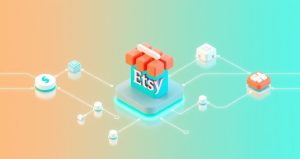As an Etsy shop grows, the time spent on manual tasks like order processing, shipping, and marketing can become overwhelming. This is where the power of strategic automation comes into play. Etsy integrations are essential tools that connect your shop with third-party applications to streamline operations, reduce human error, and free up valuable time. By leveraging these connections, sellers can focus on what truly matters: creating unique products and engaging with their customers, ultimately paving the way for sustainable and efficient business growth.
What Are Etsy Integrations?
Etsy integrations are software connections that allow your Etsy store to communicate directly with other platforms and services. This is made possible through an Application Programming Interface (API), which acts as a bridge for data to flow seamlessly between two different systems. For example, when a customer places an order on your shop, an integration can automatically send that order information to a shipping provider or a print-on-demand service without any manual data entry required from you. This creates a powerful, automated workflow.
Key Areas for Etsy Automation
The scope of Etsy integrations is vast, covering nearly every aspect of running an online business. Understanding the primary categories helps sellers identify which tools will provide the most significant impact. These solutions are designed to solve specific challenges, from producing physical goods to managing finances and communicating with customers. By targeting key operational bottlenecks, you can build a more resilient and scalable business model that is less dependent on your constant manual input, making your processes far more efficient.
1. Print-on-Demand (POD) Services
Print-on-demand is one of the most popular Etsy integrations for sellers of custom apparel, home goods, and accessories. Services like Printful or Printify connect directly to your shop. When a customer buys a t-shirt or a mug, the order is automatically sent to the POD partner. They then print, pack, and ship the product directly to your customer. This model eliminates the need to hold physical inventory, reducing financial risk and removing the entire fulfillment process from your to-do list.
2. Shipping and Fulfillment Solutions
Managing shipping can be a major time sink for successful sellers. Etsy integrations with shipping platforms like ShipStation or Pirate Ship allow you to import orders in bulk, compare carrier rates, and print shipping labels with just a few clicks. This automation drastically reduces the time spent on preparing packages. Furthermore, these tools automatically update Etsy with tracking numbers and mark orders as shipped, improving your shop’s efficiency and enhancing the customer experience by providing timely updates.
3. Accounting and Bookkeeping Software
Keeping track of finances is critical for any business, but it can be tedious. Etsy integrations with accounting software such as QuickBooks, Xero, or Wave are transformative for bookkeeping. These connections automatically sync your sales data, fees, and tax information directly into your accounting platform. This eliminates hours of manual data entry, reduces the risk of costly errors, and makes tax preparation significantly simpler. It provides a clear, real-time view of your shop’s financial health and profitability.
4. Ecommerce Platform Connectors
Many sellers expand beyond Etsy to build their own brand on other platforms like Shopify or WooCommerce. Etsy integrations designed for multichannel selling are vital for managing this complexity. These connectors sync inventory levels across all your sales channels. If an item sells on your Shopify site, the stock count is automatically updated on Etsy, preventing you from overselling products you no longer have. This centralized inventory management is key to a professional multichannel strategy.
5. Marketing and Email Automation
Building a relationship with customers beyond the initial purchase is crucial for long-term success. You can use Etsy integrations to connect your shop with email marketing platforms like Mailchimp or AWeber. These tools can help you build an email list by encouraging sign-ups and automate follow-up campaigns. You can send thank-you emails, request reviews, or announce new products to a list of engaged customers, driving repeat business and fostering a loyal community around your brand and products.
How to Choose the Right Etsy Integration
Selecting the best tool requires a careful assessment of your specific needs. First, identify the most time-consuming task in your workflow—is it shipping, accounting, or production? Look for an integration that directly solves that problem. Next, consider the cost. Many services operate on a monthly subscription model, often ranging from $10 to $50, while others charge a small fee per transaction. It is essential to factor these costs into your product pricing to maintain profitability and ensure a positive return on your investment.
Beyond functionality and price, evaluate the user experience and customer support offered by the integration provider. A tool with a complicated interface can create more problems than it solves. Look for platforms with positive reviews, clear documentation, and responsive customer service. Many offer free trials, which are an excellent opportunity to test the software and see if it fits seamlessly into your existing business operations before making a financial commitment. This ensures the integration will be a helpful asset.
Conclusion: Scaling Your Business Strategically
Ultimately, Etsy integrations are more than just convenient tools; they are strategic assets for scaling your creative business. By automating repetitive and time-consuming tasks, you can shift your focus from administrative work to creative development, product innovation, and customer engagement. Whether you are automating fulfillment with a print-on-demand partner or simplifying your finances with accounting software, these connections empower you to build a more professional, efficient, and profitable Etsy shop for the long term.






